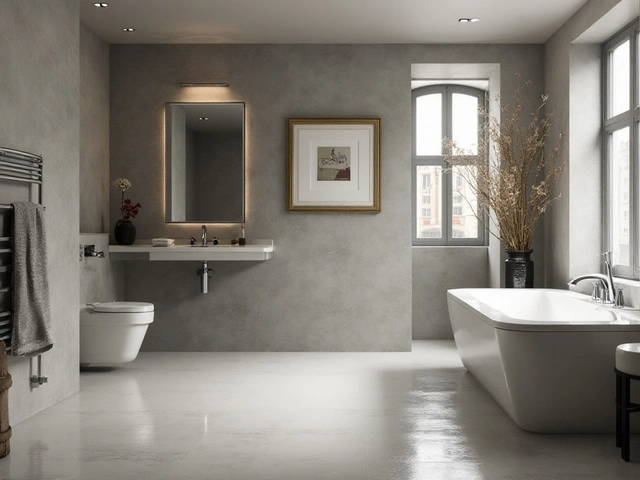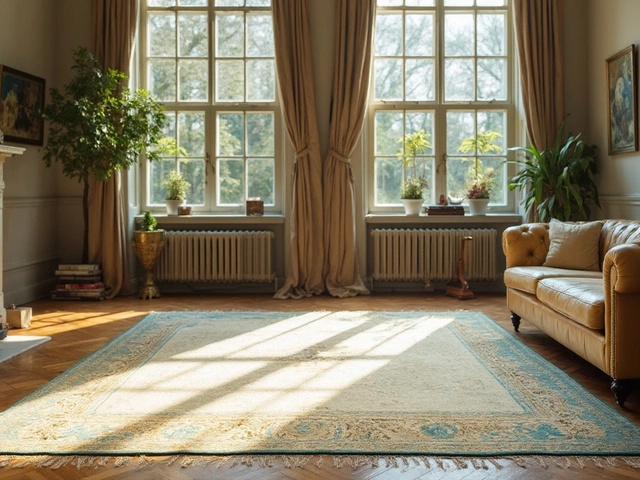Shelf Brackets: Choosing, Installing, and Styling the Perfect Support
If you’ve ever tried to hang a shelf and worried it might sag, you know the right bracket makes all the difference. Shelf brackets are the hidden heroes that keep your books, plants, and décor safely up on the wall. In this guide we’ll break down the basics – what to look for, how to install them, and a few styling tricks – so you can feel confident even if you’ve never held a drill before.
What Types of Shelf Brackets Exist?
There are three main families you’ll run into when shopping for brackets. First, simple wall brackets – the L‑shaped metal pieces that sit flush against the wall. They’re cheap, sturdy, and perfect for heavy loads like a stocked pantry shelf. Second, floating shelf brackets. These hide the hardware inside the shelf, giving a clean, modern look. They need a deeper cutout in the shelf board and usually require a wall anchor that can hold at least 30 lb per bracket. Third, decorative brackets that double as a design element, from ornate wrought‑iron shapes to sleek wooden braces. They may not be the strongest, but they add personality to a living‑room wall.
How to Pick the Right Bracket for Your Project
Start with the weight you expect the shelf to carry. A rule of thumb is 10 lb per linear foot for light décor, 25 lb for books, and 40 lb if you’re storing kitchenware. Once you know the load, match it to the bracket’s rating – the packaging or product page will list a maximum weight. Next, measure the depth of your shelf board. A 12‑inch deep shelf needs a bracket that reaches at least 10‑inch out, otherwise the edge will tip. Finally, think about the look you want. If you love a clean wall, go for hidden floating brackets. If you’re okay with a little metal showing, simple L‑brackets are fast and cheap.
Don’t forget the wall type. Drywall alone can’t hold much without proper anchors. Use toggle bolts or molly bolts for heavier shelves, especially on plaster or older walls. For studs, a standard wood screw (about 2‑inch) is enough – just locate the stud with a stud finder and drive the bracket directly into it.
Installation is easier than it sounds. Mark the bracket positions with a pencil, level them, and drill pilot holes. If you’re using anchors, insert them before the screws. Hang the shelf on the brackets, then give it a gentle shake to make sure it feels solid. If it wobbles, tighten the screws or add a third bracket for extra stability.
A quick tip: use a small piece of scrap wood under the bracket while you drill. It protects the wall finish and gives you a clean hole. Also, keep a spirit level handy – an uneven shelf not only looks off but can stress the brackets over time.
Once the shelf is up, style it with an eye for balance. Heavy items like books belong near the back edge, lighter décor can sit forward. This distributes weight evenly and reduces strain on the brackets. If you used decorative brackets, consider adding a small plant or picture frame at each end – it draws the eye to the hardware and makes it part of the design.
Remember, good brackets are an investment. They keep your wall safe, your items secure, and your room looking tidy. Whether you’re a DIY novice or a seasoned handyman, following these basics will help you pick and install shelf brackets that last.

Band Pricing: $100 or $1000 for Your Shelving Project?
Confused about bands costing $100 or $1000 for shelving? This article breaks down why prices swing so wildly, what really drives up shelving hardware costs, and how to spot the difference between basic and high-end options. You’ll get tips for buying the right bands for your shelves and see where to save versus where it pays to spend a little more. Make informed choices and avoid common mistakes before you swipe your card. Get clear on how much a shelving band should actually cost in 2025.
Categories
- Storage (27)
- Bathroom (18)
- Sofas (15)
- Curtains (15)
- Home Decor (12)
- Bedding (11)
- Kitchenware (11)
- Cushions (11)
- Mirrors (10)
- Rugs (9)
Popular Articles

2024 Trends: Are Grey Bathrooms Still Stylish?
Nov, 24 2024


